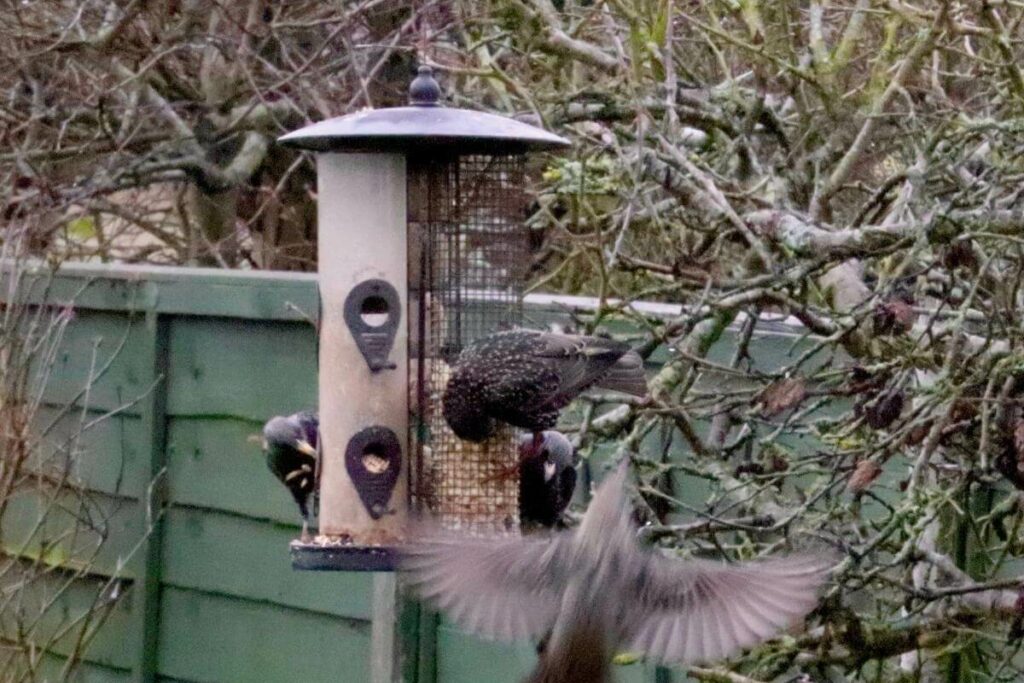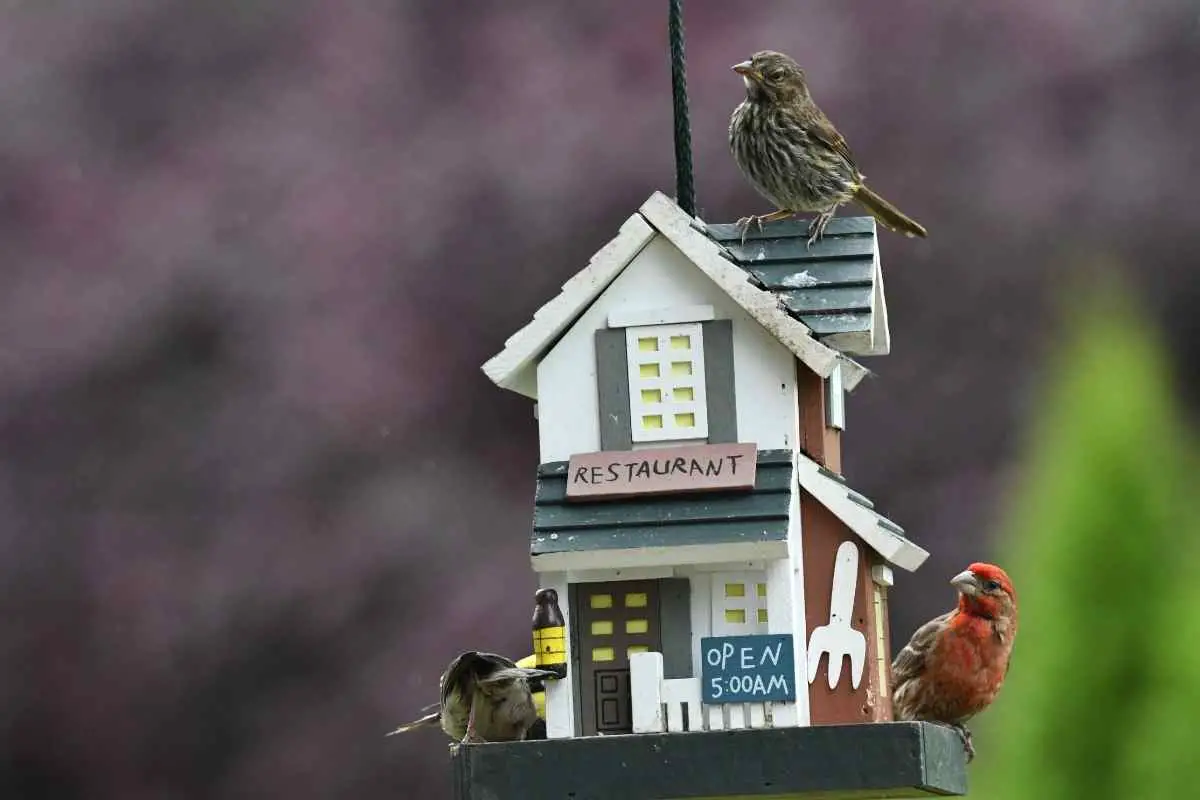If you keep birds, you’ve likely noticed them throwing seeds out of their feeders.
The question is, what causes this phenomenon?
There are several explanations why birds throw seeds out of feeders. First, the seed you give them might not be their favorite, meaning that they’ll get rid of it as they look for a tastier option. Second, they might be feeding on the soft inner part and throwing away the harder parts. Another reason might be accidental spillovers.
Here is a detailed explanation of why birds waste seeds and how to stop birds from throwing seeds.
5 Most Common Reasons on Why Do Birds Throw Seeds Out of Feeders
Throwing Inedible Parts
It’s worth noting that birds don’t feed on the whole seed.
They usually eat the softer part, known as the kernel. After this, they dispose of the harder part, called the kernel.

This happens to all seeds, regardless of size. The outer seed coat must be discarded before the birds eat the kernel.
Habitual Removal
Some species, especially ground feeders, have a habit of kicking seeds as they feed.
They do this to find softer parts that they might have missed. Unfortunately, this is a habit that can’t be changed.
Poor-quality Seeds
Birdseed is made using machines.
The process starts by collecting the edible kernel and separating them from the rest of the fruit.
Because the seeds aren’t separated, you’re likely to get immature seeds that have nothing is inside.
Naturally, birds sift through the seed and pick the ones with a meaty inside. After sorting, they discard the ones they find useless.
If you find these low-quality seeds in your bird’s feeder, it’s a sign that they are healthy.
Germinating Seeds
Another reason why birds throw out seed is when they start germinating.
While birds can eat wet seeds without affecting their health, they become hard to swallow when clumped together.
After some time, the wet seed starts germinating, rendering them inedible. Ensure that you keep moisture away from the feeder to prevent this problem.
Accidental Spills
Accidents occur from time to time.
You might find some seeds falling off as the birds move around the feeder.
The solution to this issue is to make the feeder spacious.
What are the Adverse Effects of Fallen Seed?
Besides creating a mess, having seeds all over your garden makes it untidy.
The seeds also increase the risk of infections, something you don’t want to happen to your birds.
Here are some of the effects of leaving fallen seeds in your feeder.
- Increased risk of rodent attacks – seed attracts rodents that might bring with them diseases. These creatures also force you to invest more in feeds.
- Potential infections – when the seed is left unattended, it can grow moldy. Such seeds can be harmful to birds who feed on them.
- Effects on soil – some seeds might affect your soil chemical balance and prevent plants from growing.
- Germination – after some time, the fallen seeds might start germinating and create an untidy mess.
How Do You Prevent Birds from Throwing Seed Out?
Below are some of the ways you can use to prevent birds from throwing seeds outside their feeder.
Investing in High-quality Seed
When shopping, always insist on high-quality products.
Avoid buying from dealers who sell cheap seed whose origin is unverifiable.
It’s better to spend more money on something that won’t put your animals at risk.
If you’re not familiar with different bird seed brands, don’t hesitate to ask for help from professionals.
Otherwise, you’ll end up purchasing an item that won’t have any helpful effect on your birds.
Change the Feeder Type
The two most common types of bird feeders are hanging feeders and table-style feeders.
While the latter is easier to set up, it is also prone to attack by rodents.
Whichever style you choose, ensure that its design prevents seed from falling to the ground.
Specifically, it should be enclosed and roofed to stop water from getting to the food.
Also, go for models with anti-fungal properties to reduce the risk of infections.
Trap the Seed
Lastly, you can opt to install a sieve beneath the feeder to trap the falling seeds.
This is a straightforward process that you can do yourself. All you need is an old sieve that no longer serves its original purpose.
Wrapping Up
While it’s almost impossible to stop birds from throwing out seeds, there are some proven tactics of limiting the mess they create.
First, ensure that you have the right equipment and provide the right seed. Also, keep the feeder roofed and away from moisture.
Finally, keep the feeder clean to prevent possible infections. Whenever you spot discarded seed, remove it before it causes more severe problems.
This way, you’ll save the money you would’ve otherwise spent on attending to the issues.
